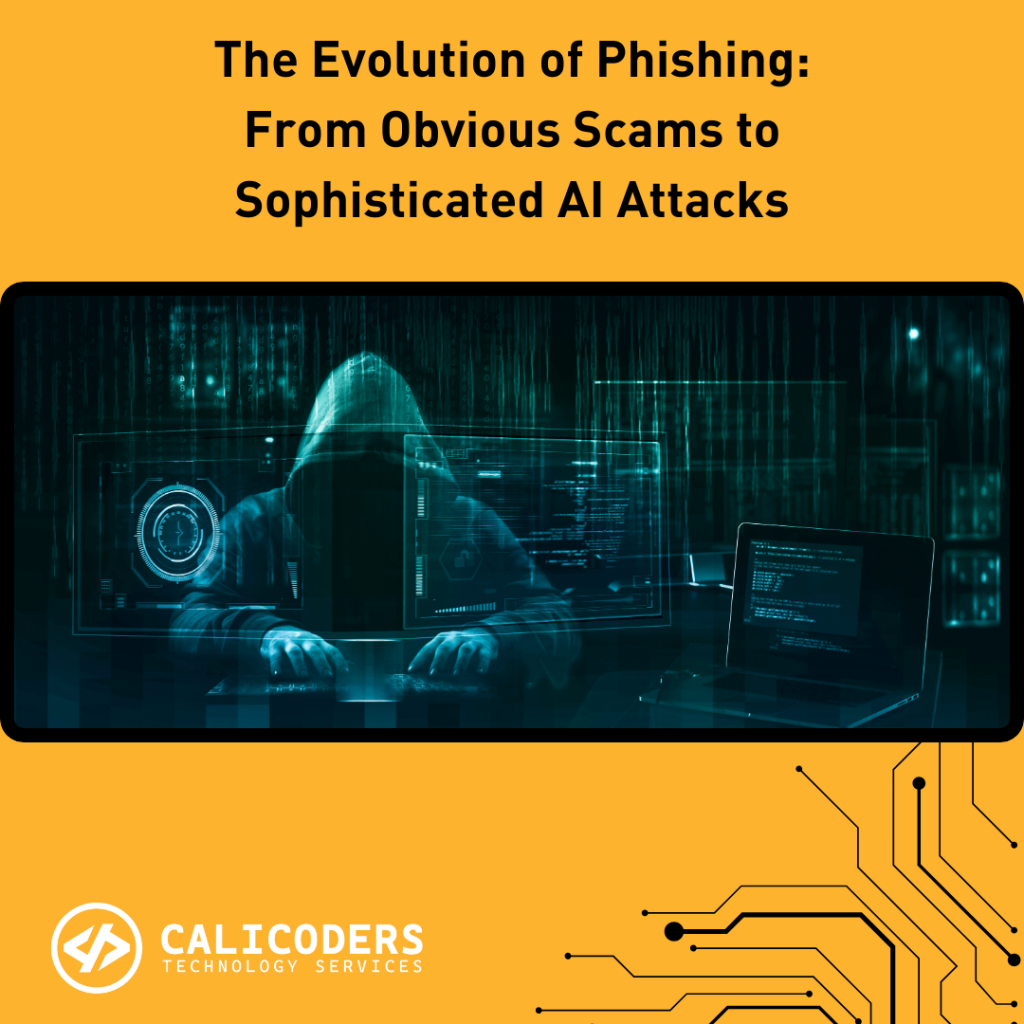
The Evolution of Phishing
Phishing began as a simple scheme. Attackers would send mass emails, hoping that someone would take the bait. These emails were often crude, filled with poor grammar, and easy to spot. But those days are over. Now, attackers use AI to refine their tactics. With AI, they can craft convincing messages and target specific individuals, making phishing far more effective.
How AI Enhances Phishing
Creating Realistic Messages AI has the ability to analyze massive amounts of data, allowing it to mimic the way people write and speak. This results in phishing messages that sound like they come from a real person, closely mirroring the tone and style of legitimate communications, making them harder to identify.
Personalized Attacks AI can scour social media and other public sources to gather information. It uses this data to create personalized phishing messages that reference your job, hobbies, or recent activities. This level of personalization makes these attacks particularly convincing.
Spear Phishing Spear phishing targets specific individuals or organizations, making it more sophisticated than regular phishing. AI enhances spear phishing by helping attackers conduct in-depth research on their targets, crafting highly tailored messages that are difficult to distinguish from legitimate ones.
Automated Phishing AI can automate many aspects of phishing, enabling attackers to send out thousands of phishing messages quickly. These systems can also adapt messages based on user responses, making follow-up attempts more persistent and increasing the likelihood of success.
Deepfake Technology Deepfakes, which use AI to create realistic fake videos and audio, add a new layer of deception to phishing attacks. For instance, attackers could create a video of a CEO requesting sensitive information, making phishing attempts even more convincing.
The Impact of AI-Enhanced Phishing
Increased Success Rates AI makes phishing attacks more effective, leading to more people falling for these sophisticated schemes. This results in more data breaches, financial losses, and identity theft.
Harder to Detect Traditional phishing detection methods are less effective against AI-enhanced attacks. Spam filters may miss these messages, and employees may not recognize them as threats, making it easier for attackers to succeed.
Greater Damage The consequences of AI-enhanced phishing can be severe. Personalized attacks can lead to significant data breaches, allowing attackers to access
sensitive information or disrupt operations, causing greater harm to businesses.
How to Protect Your Business from Phishing 2.0
Be Skeptical Always approach unsolicited messages with caution, even if they seem to come from a trusted source. Verify the sender’s identity, and avoid clicking on links or downloading attachments from unknown sources.
Check for Red Flags Look for common phishing signs, such as generic greetings, urgent requests, or demands for sensitive information. If something seems too good to be true, it likely is.
Use Multi-Factor Authentication (MFA) Implementing MFA adds an extra layer of security. Even if a phishing attack compromises your password, additional verification steps make it harder for attackers to access your accounts.
Educate Your Team Regular training and awareness programs are vital. Keep your team informed about the latest phishing tactics and how to recognize them. This knowledge is your first line of defense.
Verify Requests for Sensitive Information Never share sensitive information via email. Always verify requests through a separate communication channel, such as a known phone number or a direct message from a trusted source.
Invest in Advanced Security Tools Use anti-phishing software and email filters to detect and block phishing attempts. Make sure your security tools are up to date to protect against the latest threats.
Report Phishing Attempts Encourage your team to report any suspicious emails or phishing attempts to your IT department or email provider. This helps enhance your security measures and protects others from similar attacks.
Enable Email Authentication Protocols Ensure that your domain uses email authentication protocols like SPF, DKIM, and DMARC. These help prevent email spoofing and add an extra layer of security to your communications.
Conduct Regular Security Audits Regular security audits can identify vulnerabilities in your systems, allowing you to address them before they become problems. Proactive security measures can significantly reduce your risk of phishing attacks.
Need Help Protecting Your Business?
Phishing 2.0 is a serious and evolving threat, with AI making attacks more convincing and harder to detect. At CaliCoders, we specialize in helping small to medium-sized businesses in the Inland Empire stay secure. If you haven’t reviewed your email security lately, it might be time.
Contact us today to discuss how we can safeguard your business against phishing 2.0 and other cyber threats. Let’s work together to protect what matters most.
To get started, call our office at 909-654-6444 or click here to schedule a consultation.
